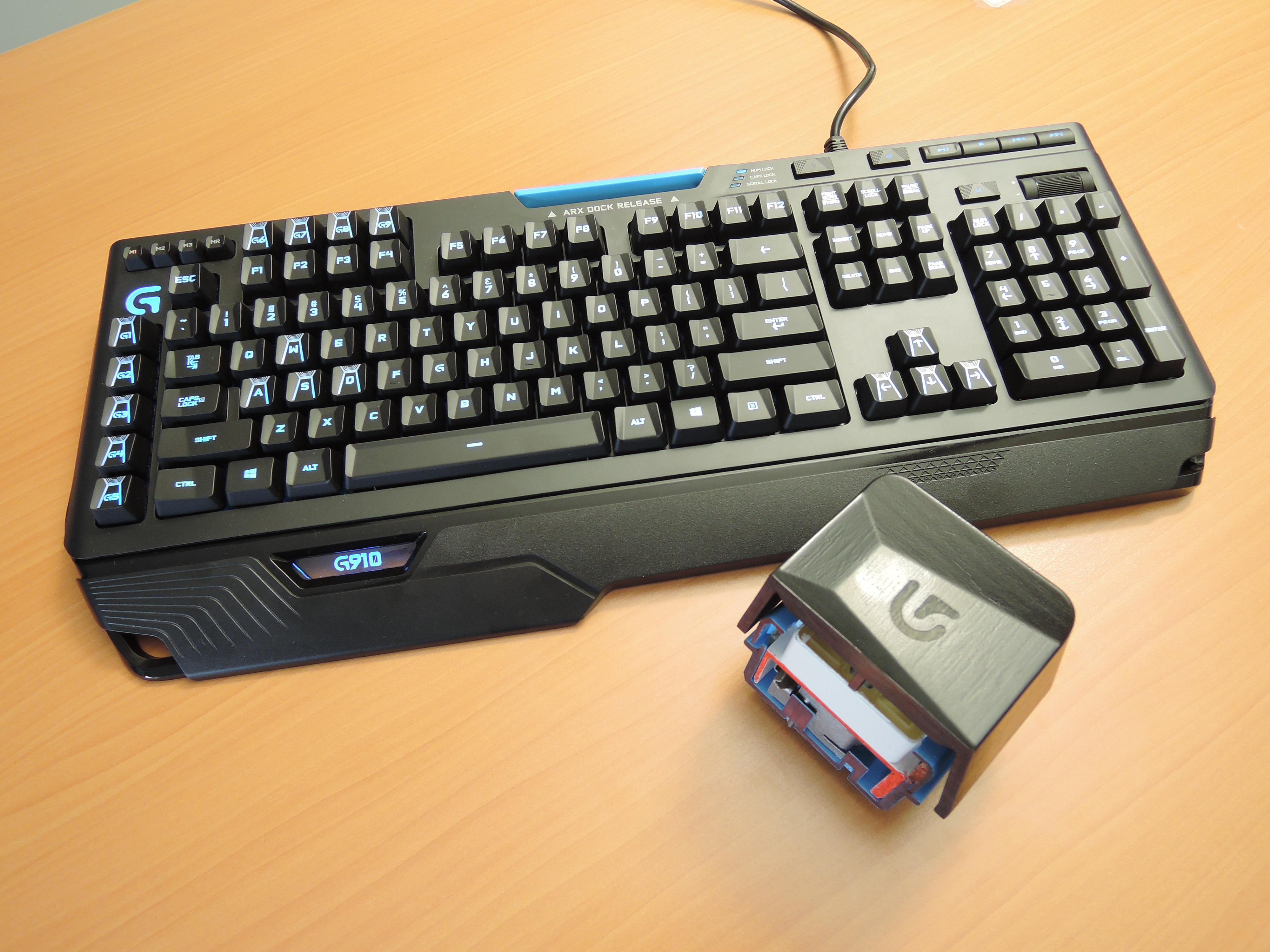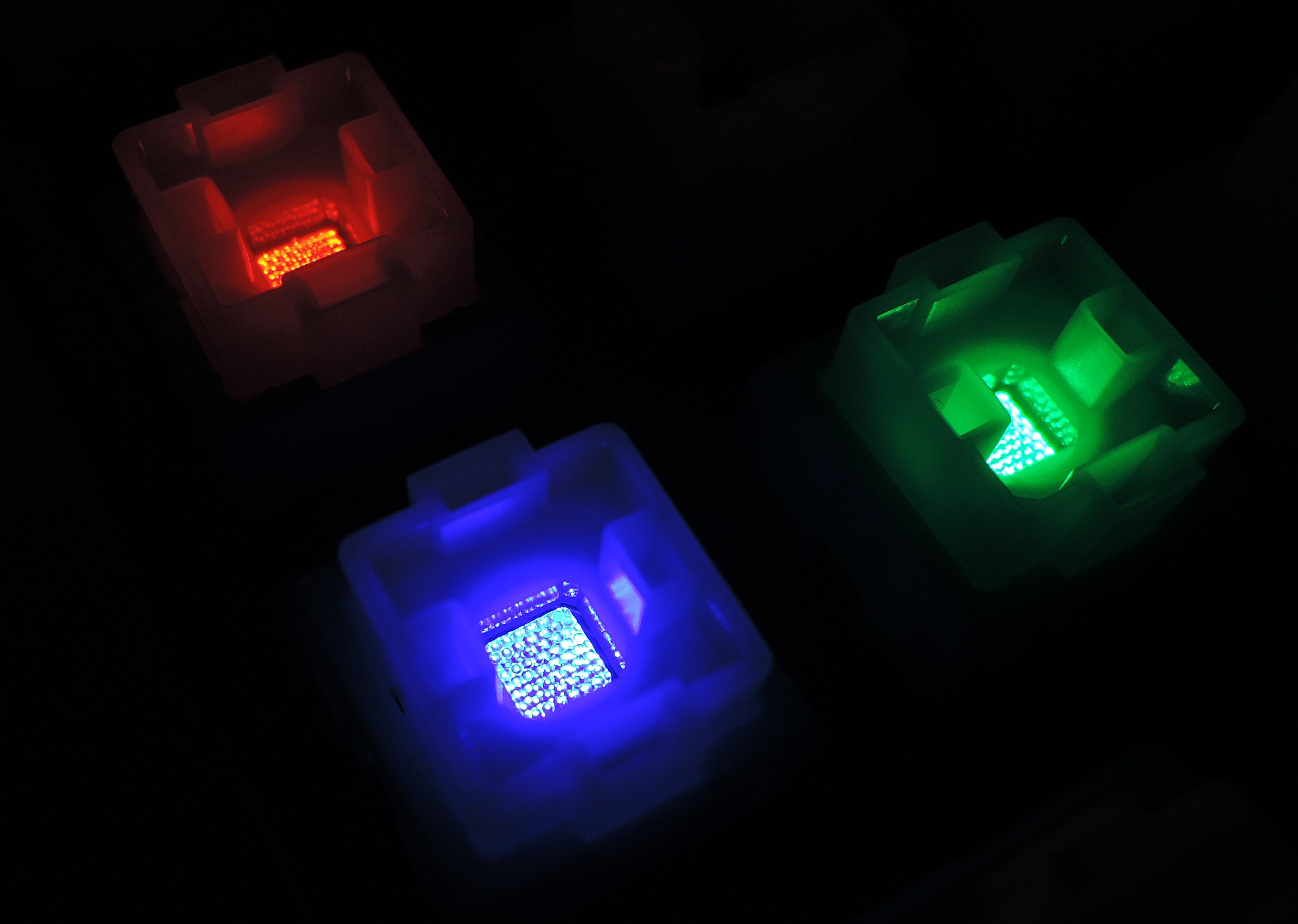Logitech's Romer-G Switches: Are They Any Good?
Logitech's product naming has left us wondering whether it's all marketing and no make, but after asking about the Romer-G switches at the company's testing facility, we're more convinced that these are the real deal.
When Logitech came out with its G910 Orion Spark keyboard, it seemed more like a "me too" attempt at a mechanical RGB-lit keyboard than anything new. You may agree that the name for the keyboard, "Orion Spark," and the name for the switches, "Romer-G," seemed like marketing fluff, so when Logitech invited us to have a tour through its G-Labs in Lausanne, Switzerland, we decided to peek around a little and see if these Logitech products actually delivered.
Logitech was very open about everything, so we asked if we could interview one of the engineers. For this story we were not so much interested in the keyboard itself (because our sister site Tom's Guide already has a review up), but rather the Romer-G switches that it features because there is so little information on them out there. We already got a lot of information throughout the tour, but addressed any remaining questions to Peter Mah, the Sr. Program Manager at Logitech.
The first thing we were wondering about is why Logitech decided to make new switches. The answer to that was simple: the Cherry MX switches are old, and they were never designed for gaming. Also, while the Cherry MX RGB switches are somewhat redesigned to offer better lighting, they still aren't quite up to snuff. (We should also mention here that Cherry has an exclusive deal with Corsair for its Cherry MX RGB switches.)
So, what has Logitech done with its Romer-G switches? Quite a lot, it seems. For starters, they feature an entirely new design that uses seven individual parts. The switch itself has a spring inside, dual contacts to register the actuation, and a landing pad to soften the bottoming out of a keypress.
The design has a shorter travel distance, a higher actuation point of just 1.5 mm, and an actuation force of 45 grams. Logitech claims that the keys are therefore 25 percent faster, which should help responsiveness in gaming.
Unfortunately, due to the different stem design you won't be able to swap the keycaps for Cherry MX-compatible caps.
Logitech guarantees that the Romer-G switches will live for 70 million presses, which is 40 percent more than the 50 million keypresses that the Cherry MX keys are good for. On top of that, the company showed a video of the switches still working after 90 million actuations.
Get Tom's Hardware's best news and in-depth reviews, straight to your inbox.
What's more interesting about the Romer-G switches, though, is the lighting. The stem of the key, on which the keycap sits, goes around the metal spring rather than inside it. This leaves enough room inside the spring for a lens that brings the light from the LED on the PCB up into the keycap. The reason Logitech designed them this way is simple: it allows the entire top of the key to be brightly lit up (as opposed to only half for Cherry MX keys), and it ensures that no light is leaked underneath the key. The best part is, Logitech achieved exactly that. The end result is very stunning.
Logitech also redesigned the keycaps. Rather than the standard cylindrical hollowing, Logitech built the Romer-G keycaps with angular sides that guide your finger into place. Originally, the raised part was 1.7 mm tall, which the professional gamers seemed to love but typists didn't, so the engineers lowered it to 1.2 mm above the top base of the keycap.
The feel of the Romer-G switch doesn't correlate to any Cherry MX switch. If I were to describe it, I'd say that Logitech's solution feels like a Cherry MX Brown switch with O-rings installed. It therefore feels a little more like a rubber dome than a mechanical switch, but not at all in a bad way.
In fact, after some getting used to, they are actually quite comfortable to type on. The keycaps on them aren't my personal favorite, though, as their different shape had my fingers getting lost from time to time. Peter Mah said that these take about two weeks to get used to, and after typing on a review unit at home for about a week I am slowly starting to agree.
The end result of Logitech's efforts makes one thing clear. The company did not build the Romer-G keys in order to circumvent the exclusive deal that Corsair has with Cherry, but rather because it saw that the Cherry MX switches simply showed their age. Having played with both of them, we can't disagree either, and Logitech has done an excellent job at building a new mechanical switch.
Now, if only the company would make a keyboard with this switch that features a more professional appearance and keycaps that are friendlier to typists.
Follow Niels Broekhuijsen @NBroekhuijsen. Follow us @tomshardware, on Facebook and on Google+.
Niels Broekhuijsen is a Contributing Writer for Tom's Hardware US. He reviews cases, water cooling and pc builds.
-
glorfendel loving mine got it about 2 weeks ago still getting used to something I don't have to bash on like a g15\510. no issues with bios works fine with my ASUS x99 deluxe. only wish the wrist rest was larger but I will get over it. software is not a mess like the corsair that I did have issues with in my bios and the chary mx reds where just to soft for typing. I game and work with it so I was looking for something like mx browns. everyone that has used it or even looked at it so far has ordered one.Reply -
itsnotmeitsyou I'm a fan of Logitech Peripherals and customer support, but those keycaps look like TRON barf.Reply
I am excited to see the proliferation of mechanical switches in keyboards, and will have to hunt one of these down to see how they feel. Then I'll wait for some better key-caps to show up. -
Belardo The key shape is crap.Reply
Okay, use those switches - in a regular shaped keyboard and keys... with an improved layout. I would REALLY REALLY love to buy a modern keyboard that works worth a damn.
Todays keyboards use decals for the lettering. They tend to last months, maybe a year or two... and I'm talking about a $20~50 name brand product.
Also, because its hard to see the lettering on a black keyboard - in a not-so-bright room, it needs to be lit. We need more white keyboards folks.
This is *WHY* I'm still using a 1995 era generic-clone of the MS Natural keyboard... because pretty much NOBODY makes them like this. These were sold by Lite-ON, Mouse Systems, Dell and others:
http://forum.clubedohardware.com.br/uploads/monthly_06_2008/post-715-13884947336895.gif
This keyboard sold for $25~35. It has a nice big L-shaped ENTER key and a nice BIG Backspace key. (With most keyboards - you don't get both). How did they do this? They made the standard way-to-large right-shift key smaller and moved the |\ (pipe) key to a better location.
How I would make a MODERN new keyboard (ergonomic or not) - Very much the layout in the photo. But I'd like the page-island keys rotated and the mostly useless Insert key off in order to make the DELETE KEY larger - like this Logitech:
http://content.hwigroup.net/images/products/xl/016594/logitech_media_keyboard_600.jpg
Actually almost like that layout... as the Scroll Lock / Pause-break keys are rarely ever used. The DUMB thing about this keyboard... is that the right SHIFT key is HUGE - while they stupidly made the LEFT shift key TINY because they duplicated the PIPE \ key ( |\) on both sides of the keyboard - making the ENTER and L-Shift keys smaller. When that key should be below the ENTER key (like my first example) which still allows the R-Shift to be a decent size.
That is the keyboard *I* want...!
As of today... I'm using my 2nd SK-6000 keyboard (1st photo) which I found at a thrift store for $10. I put my original 1995 version in storage - not because its broken, but because they keys have a bit more wear and mostly because it has a HUGE AT style keyboard connector which I use PS/2 Adapter (this is about 2" long) plugged into a PS/2 extender cable (because having a 3" of plug sticking out of a PS2 connector is too damn heavy and space issues).
(For those in full forum mode - click on the quotes ICON at top - so you can see the pics without clicking on the link)
-
geogan I wouldn't mind one of these new keyboards that allows you to colour individual keys different colours (for Premiere editing etc) but I STILL NEED my Logitech keyboards little LED display panel to show me into - I ALWAYS have this displaying everything about CPU/GPU/MEMORY conditions using MSI Afterburner while playing BF4. Attention Logitech I will NOT buy any of your new keyboards without this feature.Reply -
Marcus52 ReplyHas Logitech solved their issues with their keyboards having a hard time being detected by BIOS and the quality of the LED circuitry or the plethora of other issues that make their keyboards hard to live with outside of an MMO?
3 keyboards that cost $100+ in a row from Logitech with significant issues made me move on to a mechanical keyboard with Cherry switches.
I have never had any of those issues with Logitech keyboards. -
Marcus52 Unfortunately Logitech took so long to come out with these that I bought a Corsair K95 already - but I would have anyway because I want a full 18 macro keys on the side. Some of us G15 users had been asking for a mechanical keyboard just like it and got no word from Logitech, so there you go, one more time a company loses money by not communicating with its customers.Reply -
qlum Id be interested to see how well Logitech fairs with its cherry alternative, However it will still be quite aome time before I replace my Steelseries G6v2 Right now key ahine is the only issue I have and that usually happens in a month anyway. I also prefer mine without extra lights as they only get in the way if you are watching something from bed or when you leave your pc on at night.Reply -
kiniku I've had this for a week. All I can say is Logitech nailed it. I am very glad -even more so after reading this article- I have this keyboard. It's very nice.Reply -
kiniku I've had this for a week. All I can say is Logitech nailed it. I am very glad -even more so after reading this article- I have this keyboard. It's very nice.Reply




